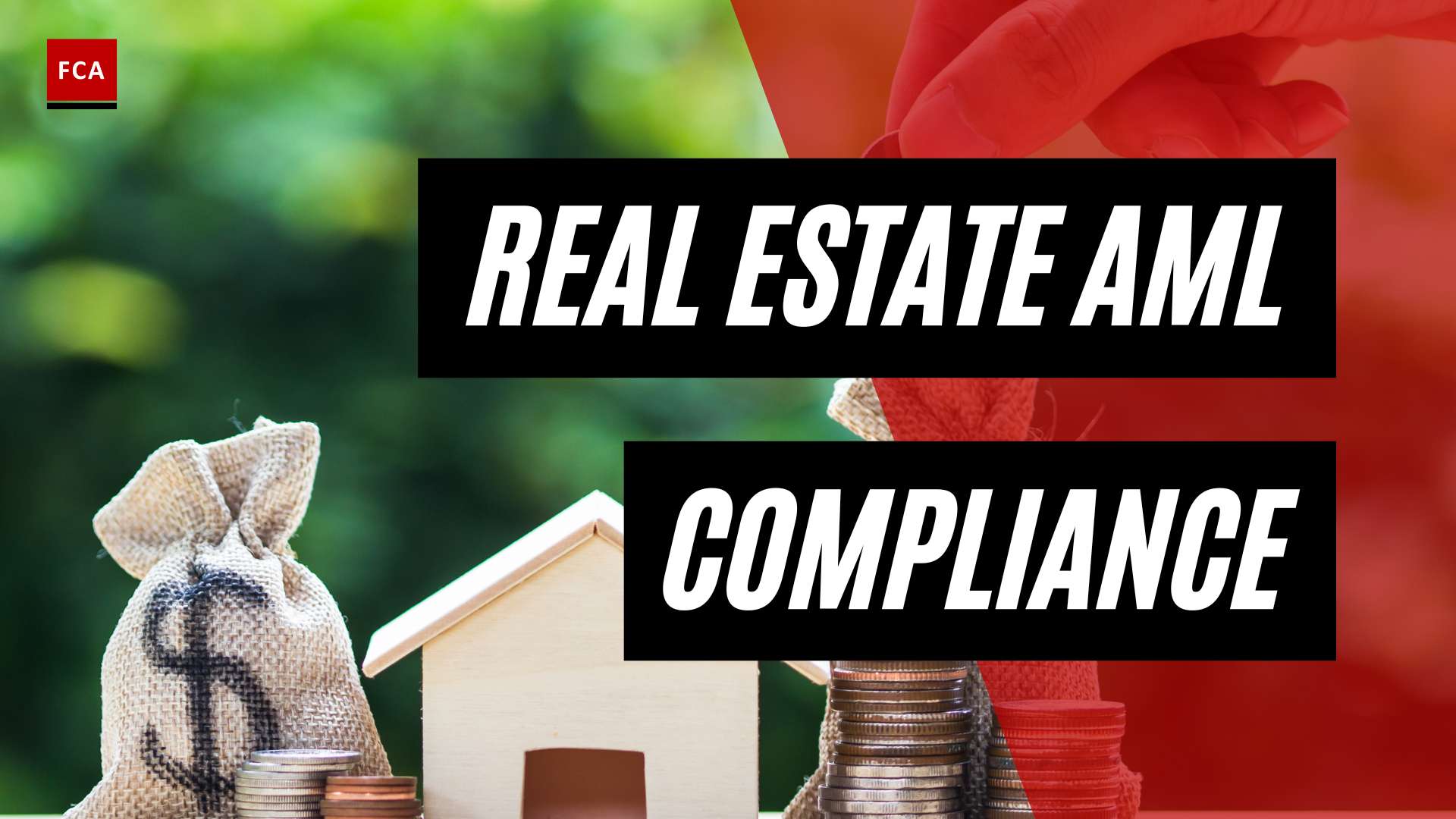Money Laundering Through Real Estate
Money laundering through real estate has become a prevalent issue in the realm of financial crime. Criminals are exploiting the high-value nature of real estate transactions to legitimize their illicit funds and obscure their origins. The large sums of money involved and the high property values make real estate an attractive avenue for money launderers.
Understanding Real Estate Money Laundering
Real estate money laundering refers to the process of disguising the illicit origins of funds by involving them in real estate transactions. Criminals take advantage of the lack of transparency in real estate deals and the simplicity of transferring properties between individuals or companies to launder money. This allows them to integrate their illegal funds into the legitimate economy, making it difficult to trace the illicit origins of the money.
The ease of transferring significant sums of money through real estate transactions without arousing suspicion makes this method attractive to money launderers. By acquiring properties or engaging in real estate transactions, criminals can convert their illicit funds into seemingly legitimate assets. This process helps to obscure the source of the money and facilitates its integration into the financial system.
Risks and Implications of Real Estate Money Laundering
The risks and implications of real estate money laundering are significant. Criminals utilize various methods to launder money through real estate transactions, as identified by Sanction Scanner. These methods include:
-
Using Third Parties: Money launderers may employ third parties, such as nominees or straw buyers, to conceal their involvement in real estate transactions and distance themselves from the illicit funds.
-
Manipulating Property Values: Criminals may manipulate property values to either overstate or understate them. Overpaying for a property can help launder money by inflating the apparent value of the asset, while understating the value can assist in concealing the true worth of the property.
-
Utilizing Shell Companies: Money launderers often establish shell companies or use existing ones to purchase properties. This tactic helps to obscure the true ownership of the assets and complicates efforts to trace the funds.
-
Cash Transactions: Cash is frequently used for high-value real estate transactions as it allows criminals to avoid detection and maintain anonymity. Cash transactions create opportunities for money launderers to conceal their illegal funds and make it challenging for authorities to track the source of the money.
The implications of real estate money laundering are far-reaching. Not only does it facilitate the integration of illicit funds into the legitimate economy, but it also distorts property markets and can contribute to housing price inflation. Additionally, real estate money laundering undermines the integrity of the financial system and can have detrimental effects on national security, as identified by TraCCC.
To combat real estate money laundering, governments and regulatory bodies have implemented anti-money laundering regulations and enhanced oversight measures. These safeguards aim to increase transparency, enhance due diligence, and reduce the opportunities for money laundering through real estate transactions. It is crucial for professionals working in compliance, risk management, anti-money laundering, and anti-financial crime to stay informed about these regulations and actively participate in preventing and detecting real estate money laundering activities.
Anti-Money Laundering Regulations for Real Estate
To combat the risks associated with money laundering through real estate, regulatory frameworks have been established to ensure greater transparency and accountability in real estate transactions. These regulations impose obligations and requirements on covered businesses involved in real estate deals. By adhering to these regulations, the aim is to mitigate the potential for money laundering activities and maintain the integrity of the real estate market.
Regulatory Framework for Real Estate Transactions
The Financial Crimes Enforcement Network (FinCEN) is at the forefront of implementing anti-money laundering regulations for residential real estate transfers. These regulations, as outlined in the Federal Register, require certain businesses and professionals involved in real estate transactions to establish anti-money laundering programs (Federal Register). The objective is to counter the potential risks associated with money laundering schemes and protect the integrity of the real estate market.
Obligations and Requirements for Covered Businesses
Covered businesses and professionals engaged in real estate transactions must implement robust anti-money laundering programs. These programs encompass a range of policies, procedures, and controls to detect and prevent money laundering activities in real estate deals. The specific obligations and requirements may include:
-
Customer Due Diligence: Covered businesses are expected to conduct thorough due diligence on customers involved in real estate transactions. This includes verifying the identity of buyers, sellers, and beneficial owners, as well as assessing the source of funds to ensure they are legitimate and not derived from illicit activities.
-
Ongoing Monitoring: Regular monitoring of real estate transactions is crucial to identify any suspicious activities. Covered businesses should establish procedures to monitor and review transactions, assess the nature and purpose of these transactions, and promptly report any suspicious transactions to the appropriate authorities.
-
Suspicious Activity Reporting: Covered businesses have an obligation to file suspicious activity reports (SARs) when they encounter transactions that raise suspicions of money laundering or other illicit activities. SARs provide crucial information to law enforcement agencies and contribute to the detection and prevention of financial crimes.
-
Training and Awareness: To effectively implement anti-money laundering measures, covered businesses must ensure that their employees receive appropriate training on identifying and reporting suspicious activities. Regular training programs help to enhance the overall awareness and understanding of money laundering risks within the real estate sector.
These obligations and requirements are designed to promote greater transparency in real estate transactions and enhance the ability to detect and prevent the illegal use of real estate for money laundering activities. By adhering to these regulations, covered businesses contribute to safeguarding the U.S. financial system from illicit financial transactions (Federal Register).
In summary, anti-money laundering regulations for real estate transactions play a critical role in protecting the integrity of the real estate market and preventing the illicit flow of funds through property deals. Compliance with these regulations is essential for covered businesses to mitigate the risks associated with money laundering and contribute to the overall integrity of the financial system.
Geographic Targeting Orders (GTOs) and Enhanced Oversight
To combat money laundering through real estate, authorities and regulatory bodies have implemented measures such as Geographic Targeting Orders (GTOs) and enhanced oversight. These initiatives aim to identify and prevent illicit financial activities within the real estate sector.
Implementation of GTOs to Combat Money Laundering
The Financial Crimes Enforcement Network (FinCEN) and the U.S. Department of the Treasury have issued Geographic Targeting Orders (GTOs) to target high-value transactions in specific geographic areas, with the goal of identifying and reducing money laundering risks in real estate transactions (TraCCC). GTOs require increased reporting and due diligence from covered businesses involved in these transactions. By focusing on high-value transactions, GTOs help authorities monitor and identify potential money laundering activities.
The implementation of GTOs has played a significant role in combating money laundering in the real estate sector. These orders enhance transparency, increase regulatory oversight, and improve the detection of suspicious transactions. GTOs require covered businesses, such as title companies and financial institutions, to provide additional information on high-value real estate transactions. This increased reporting and scrutiny contribute to a more robust anti-money laundering (AML) framework in the real estate sector.
Strengthening Regulatory Oversight in Real Estate Transactions
In addition to GTOs, regulatory bodies and authorities have taken steps to strengthen the oversight of real estate transactions to mitigate money laundering risks. These efforts include enhancing due diligence requirements, improving transparency, and implementing robust Know Your Customer (KYC) procedures (Sanction Scanner). By establishing regulations and gatekeepers among professionals involved in real estate transactions, authorities can enhance the detection and prevention of money laundering activities.
To further strengthen the regulatory framework, recent changes require nonbank residential mortgage lenders and originators to establish and implement AML programs and file Suspicious Activity Reports (SARs) starting from March 1, 2022. This extension of the SAR-filing requirement to loan or finance companies, which were previously exempt, helps ensure a more comprehensive approach to detecting and reporting suspicious activities within the real estate sector.
By implementing these measures and strengthening regulatory oversight, authorities aim to enhance the integrity of real estate transactions and prevent money laundering. These efforts contribute to maintaining the transparency and stability of the real estate market while safeguarding against illicit financial activities.
In the next section, we will explore the red flags of money laundering in real estate, providing insights into the warning signs that professionals working in compliance, risk management, anti-money laundering, and anti-financial crime should be aware of.
Red Flags of Money Laundering in Real Estate
To effectively combat money laundering in real estate, it is crucial to be aware of the red flags that may indicate potential illicit activities. By recognizing these indicators, professionals working in compliance, risk management, anti-money laundering, and anti-financial crime can take appropriate actions to mitigate the risks. Here are some common red flags to watch out for:
Third-Party Involvement and Proxy Buyers
One common technique used in money laundering through real estate transactions is the involvement of a third party or proxy buyer. This strategy aims to avoid linking the property to the criminal in official records. Signs to watch for include someone else handling negotiations and paperwork, or the buyer appearing very late in the process, potentially to avoid background checks (First American Mortgage Solutions). It is crucial to conduct thorough due diligence and identify the true beneficial owner of the property to prevent potential money laundering schemes.
Irregular Sale Prices and Price Manipulation
Suspicious activity may be indicated by the purchase price of a property being significantly higher or lower than expected, with no clear reason. This irregular sale price could signal price manipulation, allowing larger funds to be laundered through mortgages or facilitating illicit cash transactions (First American Mortgage Solutions). Professionals involved in real estate transactions should be vigilant in identifying unusual pricing patterns and investigate further to ensure legitimacy.
Unusual Fund Sources and Cash Transactions
Unusual fund sources for deposits or fees can raise red flags in real estate transactions. Large amounts of physical cash without a paper trail, or funds originating from an unrelated third party or foreign account, should be subject to further inquiries to determine the legitimacy of the funds (First American Mortgage Solutions). It is essential to conduct thorough know your customer (KYC) checks and due diligence to ensure compliance with anti-money laundering regulations.
By remaining vigilant and recognizing these red flags, professionals in the real estate industry can help prevent and detect potential money laundering activities. Implementing robust compliance programs and ensuring compliance with reporting and disclosure requirements are essential steps in combating money laundering.
For more information on money laundering regulations and prevention in the real estate sector, explore our articles on real estate money laundering schemes and real estate money laundering prevention.
Mitigating Money Laundering Risks in Real Estate
To effectively combat the risks of money laundering in real estate, it is crucial for professionals in the industry to implement robust measures. By following best practices and adhering to relevant regulations, real estate professionals can play a vital role in preventing illicit activities. Here are three key strategies for mitigating money laundering risks in real estate.
Effective Know Your Customer (KYC) Checks
Implementing thorough and effective Know Your Customer (KYC) procedures is essential in verifying the identity of buyers and sellers, ensuring they are not involved in money laundering activities. By conducting comprehensive due diligence, real estate professionals can identify potential red flags and mitigate the risk of facilitating illicit transactions.
KYC checks should include verifying the identity of individuals involved in the transaction, obtaining proof of address and other relevant documentation, and conducting enhanced due diligence for high-risk customers. It is important to stay up to date with the latest KYC requirements and regulations to ensure compliance.
Due Diligence and Compliance Programs
Performing due diligence on clients and transactions is a critical step in mitigating money laundering risks in real estate. This includes verifying the source of funds, conducting background checks on individuals involved, and identifying any red flags that may indicate potential money laundering activities.
Establishing robust compliance programs within real estate organizations is also vital. These programs should include clear policies and procedures for identifying and reporting suspicious transactions, as well as regular training for employees to raise awareness about money laundering risks.
Compliance with Reporting and Disclosure Requirements
Compliance with reporting and disclosure requirements is crucial for combating money laundering in real estate. Real estate professionals must be aware of their obligations and ensure they comply with relevant anti-money laundering regulations. This includes reporting any suspicious transactions to the appropriate authorities and disclosing beneficial ownership information when required.
By promptly reporting and sharing relevant information, real estate professionals contribute to the broader efforts in detecting and preventing money laundering activities in the industry. Compliance with reporting and disclosure requirements helps authorities investigate potential cases and take necessary actions to combat illicit financial flows.
By implementing effective KYC checks, conducting due diligence, and ensuring compliance with reporting and disclosure requirements, real estate professionals can help mitigate the risks of money laundering in the industry. Staying vigilant and proactive in identifying and addressing red flags is crucial in maintaining the integrity of real estate transactions and protecting the industry from being exploited for illicit purposes.
International Efforts to Combat Real Estate Money Laundering
As the issue of money laundering through real estate continues to persist, international efforts have been made to establish regulations and directives aimed at combating this illicit activity. In this section, we will explore some of the key initiatives and measures taken to address real estate money laundering on a global scale.
EU Regulations and Directives
The European Union has been at the forefront of implementing anti-money laundering measures in the real estate sector. The European Union Anti-Money Laundering Directive (AMLD) requires member states to maintain registers of ultimate beneficial owners of real estate. This directive aims to enhance transparency and prevent the misuse of real estate for money laundering purposes (TraCCC). Additionally, the European Union 5th Anti-Money Laundering Directive (AMLD5) mandates all EU member states to establish registers of beneficial owners of corporate entities. Real estate agents and businesses are obligated to comply with these regulations to curb money laundering.
Actions and Measures in Different Jurisdictions
Beyond the European Union, other jurisdictions have also taken significant steps to combat real estate money laundering. In the United States, the passing of the Corporate Transparency Act in 2021 requires companies to disclose their beneficial owners to the Financial Crimes Enforcement Network (FinCEN). This act aims to enhance transparency and combat money laundering activities in real estate and other sectors (Kychub). Moreover, the FinCEN issued a final rule requiring nonbank residential mortgage lenders and originators to establish and implement anti-money laundering (AML) programs and file Suspicious Activity Reports (SARs) starting from March 1, 2022. These regulations also include recordkeeping requirements applicable to other financial institutions.
Role of Real Estate Agents in Anti-Money Laundering Efforts
Real estate agents play a crucial role in the fight against money laundering in the real estate sector. They are required to adhere to anti-money laundering regulations, conduct due diligence on their clients, and report any suspicious activities. By diligently implementing these measures, real estate agents contribute to the prevention and detection of money laundering activities. Their compliance with reporting and disclosure requirements ensures that authorities can monitor and investigate potential cases of money laundering effectively.
It is worth noting that these international efforts are continually evolving as new threats and trends emerge in real estate money laundering. Staying updated with the latest regulations and directives is essential for professionals working in compliance, risk management, anti-money laundering, and anti-financial crime. By working together across borders, jurisdictions, and sectors, the global community can strengthen its defenses against real estate money laundering and protect the integrity of the real estate market.









